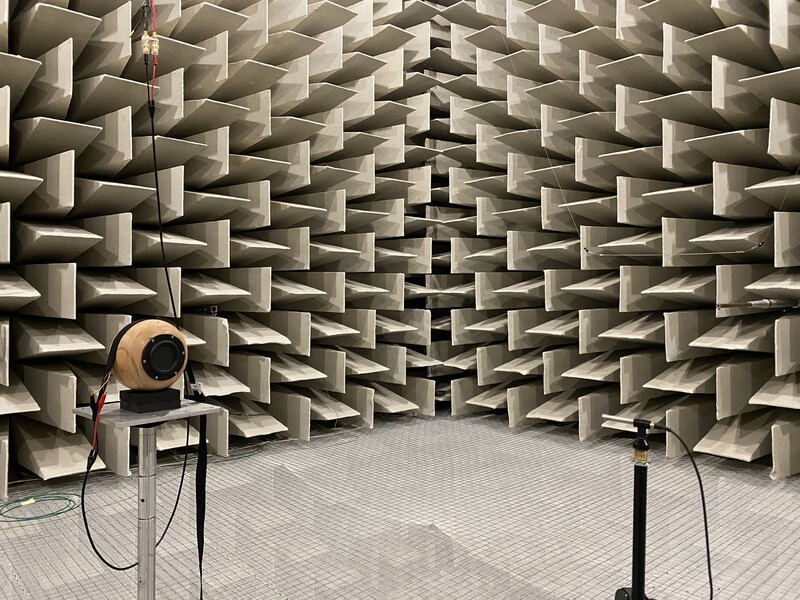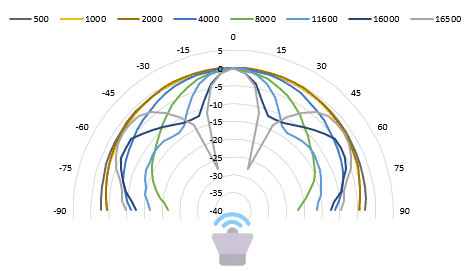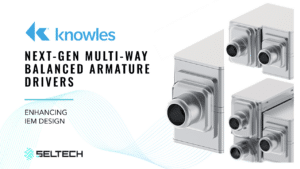
Speaker enclosure directivity qualification inside the LNE Anechoic chamber
When listening to music with a speaker system, we want perfect sound reproduction regardless of where we are in a room. However, depending on the type of speaker and the geometry of the speaker enclosure, there can be a large range of considerations to optimize the design.
This is one of the reasons why it is fundamental to properly quantify the behavior of a speaker system in an appropriate acoustic environment.
This analysis can be achieved by performing sound pressure level measurements at different angles around the system.
The step angle between each measurement will determine the accuracy : the smaller the angle step, the greater the precision.
Since this measurement is sensitive to disturbances coming from directions other than the speaker under test, it must be performed in an anechoic environment.
The results are usually reported in a polar pattern, showing the attenuation of the sound perceived by a person located at different points around the speaker enclosure. At 0°, the listener is located directly in front of the speaker and therefore perceives 100% of the sound (0 dB attenuation). As the listener’s location around the audio source changes, they perceive less sound energy, depending on the acoustic frequency.

SELTECH can provide support to choose the best speaker and design the form factor of a prototype with ideal sound reproduction – tailored for the typical use case and environment that your device would be used in.
Review by:
– Frédéric Fallais, Acoustic Application Engineer
– Arthur D., Acoustic Technician

